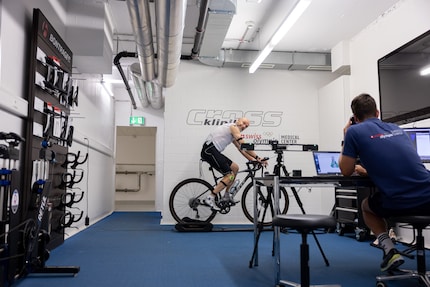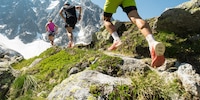
Background information
Outside magazine tests trail running shoes: these are the winners
by Siri Schubert

In a quest to finally find the perfect seating position on my gravel bike, I’ve decided to book a professional bike fitting. After three hours, I leave Basel Crossklinik with a «new» bike and the realisation that five millimetres can be so much more than just half a centimetre.
«Just take your stride length and multiply it by 0.885» or «just sit on the saddle and place your heel on the pedal» – two common rules of thumb when it comes to determining the right height of your bike saddle. However, finding the perfect seating position on a bike depends on many other factors. A rule of thumb won’t do me. I need a professional bike fitting.
And let’s not forget about mobility. Many people’s joints and muscles aren’t very supple, especially at an advanced age. In my case, there’s an imbalance between the right and left leg, with the left leg being a lot less flexible than the right one. Raphael Böni shows me some exercises to correct this and improve leg axis stability.
I’ve opted to add saddle pressure measurement with gebioMized to my bike fitting. This isn’t a must, but Raphael Böni explicitly recommends it, as this measurement provides important information about the pressure distribution and stability of the seating position.
Over the next two hours, we work our way from adjusting the cleats to the height and saddle setback and the handlebars to the stem. Again and again, Raphael Böni makes tiny changes and then checks the result. Finally, we’ve optimised the saddle position based on the saddle pressure measurement, positioned the height, setback and angle to my body, ergonomically adjusted the handlebars and adjusted the cleats.
Just to be clear, we’re talking about a few millimetres. Sounds like small adjustments, but the effects on the bike are huge. For example, Raphael Böni discovers that my cleats are positioned too frontally on my shoes. He moves them back five millimetres, landing exactly on the axis between the base joints of the big and little toe.
After three hours, I’ve cycled quite a few kilometres on the bike roller and my gravel bike’s been fitted to me. Finally, Raphael Böni creates a digital image of my bike using Retül’s so-called Zin tool. And I’m handed a 10-page PDF with my personal report, packed with numbers for all kinds of settings such as saddle and handlebar position, pedal alignment and joint angle.
Much like the proverbial picture worth a thousand words, these two pictures say more than 1,000 numbers:
My position on the bike now feels a lot sportier to me. I sit lower, leaning further forward, so that the position is comfortable even on the drop bar, the lower part of the racing handlebars. My shoulders are lowered and my arms aren’t extended all the way anymore, but are in a relaxed position. As a reminder, these are the (only) adjustments that have been made:
After this professional bike fitting, I go home with what feels like a new gravel bike and an important realisation – riding a bike might seem like a trivial process, but the interaction between human and machine is a complex process. One in which five millimetres is so much more than half a centimetre. The picture above with the pressure distribution on the saddle is emblematic of this. After the bike fitting, I’m lighter than before, so to speak.
A few days have passed since my visit to Raphael Böni at Crossklink and I’ve covered about 50 kilometres on my newly adjusted bike. I’ve noticed the following:
In addition, I feel like I’m using my energy more efficiently when making the bike go forward. All in all, everything feels a bit more sporty. As I said, this is only a first impression after a few kilometres, but it’s still a big difference.
Interested in getting a professional bike fitting at Crossklink in Basel? Here’s everything you need to know.
Header image: Christian WalkerFrom radio journalist to product tester and storyteller, jogger to gravel bike novice and fitness enthusiast with barbells and dumbbells. I'm excited to see where the journey'll take me next.
Interesting facts about products, behind-the-scenes looks at manufacturers and deep-dives on interesting people.
Show allThat’s why I’ve made an appointment with Raphael Böni from Crossklinik in Basel. Here at the Clinic for Orthopaedics and Sports Medicine, the graduate sports scientist with advanced training in bike fitting will adjust my gravel bike to fit my body and posture. The passionate amateur triathlete does two to four fittings a day, each lasting between two and three hours. Well invested time, as I realised when I left the clinic and felt like I was riding a new bike. But let’s start at the beginning.
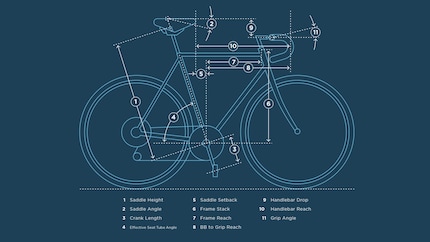
Strain-related complaints – an unpleasant term for an unpleasant experience. In my case, the complaints are tensions in the neck and lower back as well as my left hand and the outer sole of my right foot regularly going numb while cycling. Many of Raphael Böni’s customers also experience knee pain. The knees and back seem to suffer the most from an incorrect cycling position. On top of this, many amateur athletes don’t take enough time for recovery, which leads to overexertion.
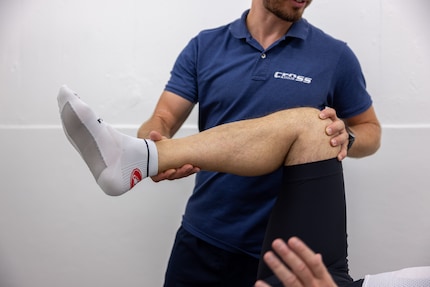
Half an hour has gone by and my gravel bike still hasn’t been touched. But that’s about to change now. Crossklinik is equipped with Retül’s 3D motion capture system, which provides advanced analysis to determine dynamic seating position. It allows Raphael Böni to measure the body angles of athletes within only a few seconds. As a result, any changes that are made to the seating position can be seen immediately, making it easier to find the perfect position.
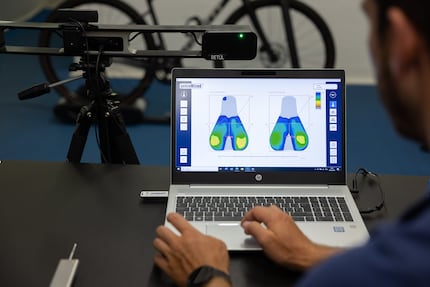
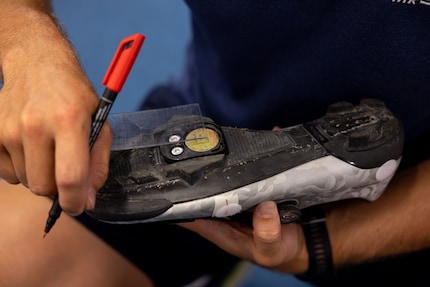
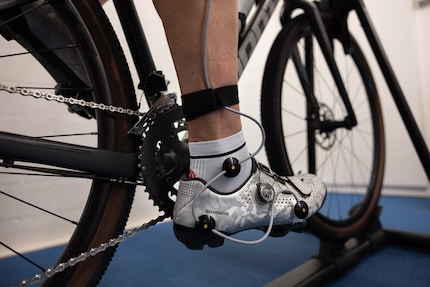
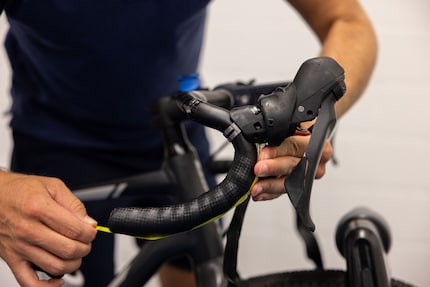
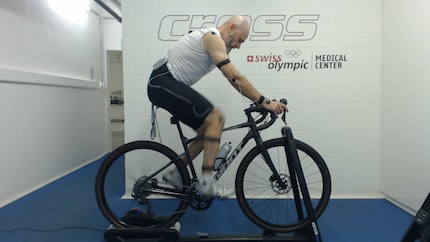
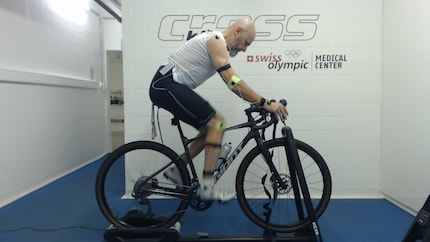
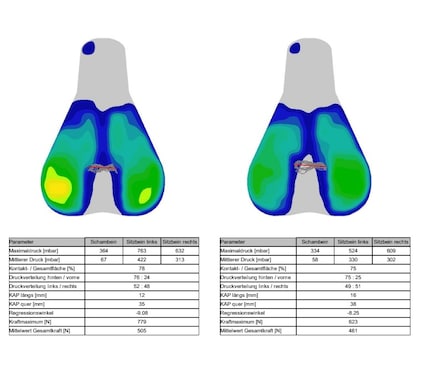
The tension in my neck and lower back has disappeared and my left hand doesn’t go numb anymore. My front right sole still numbs slightly – but much less than before. However, Raphael had pointed out to me that the shoes or the insoles were probably also causing this. My feet are a little too wide for the Shimano shoes I wear. If the numb feeling doesn’t go away, he recommended other insoles from Specialized or, as a last resort, different shoes – Lake Cycling ones, for instance.
